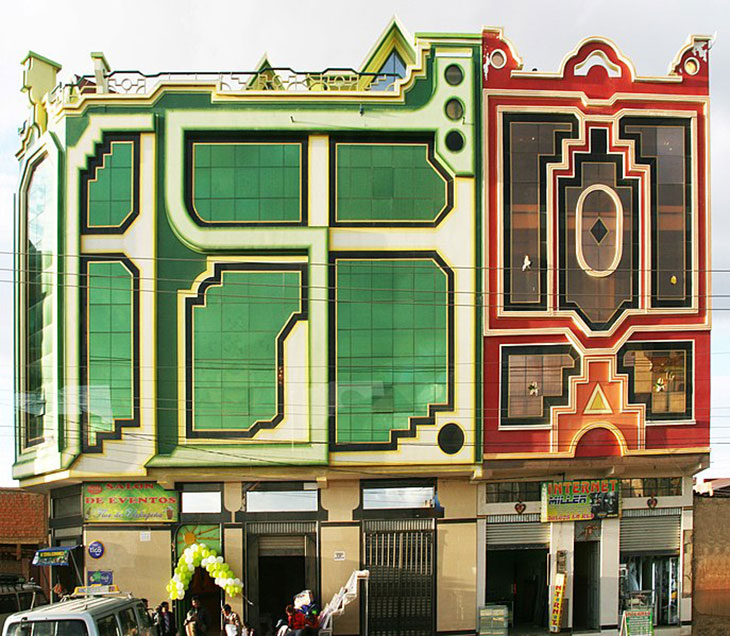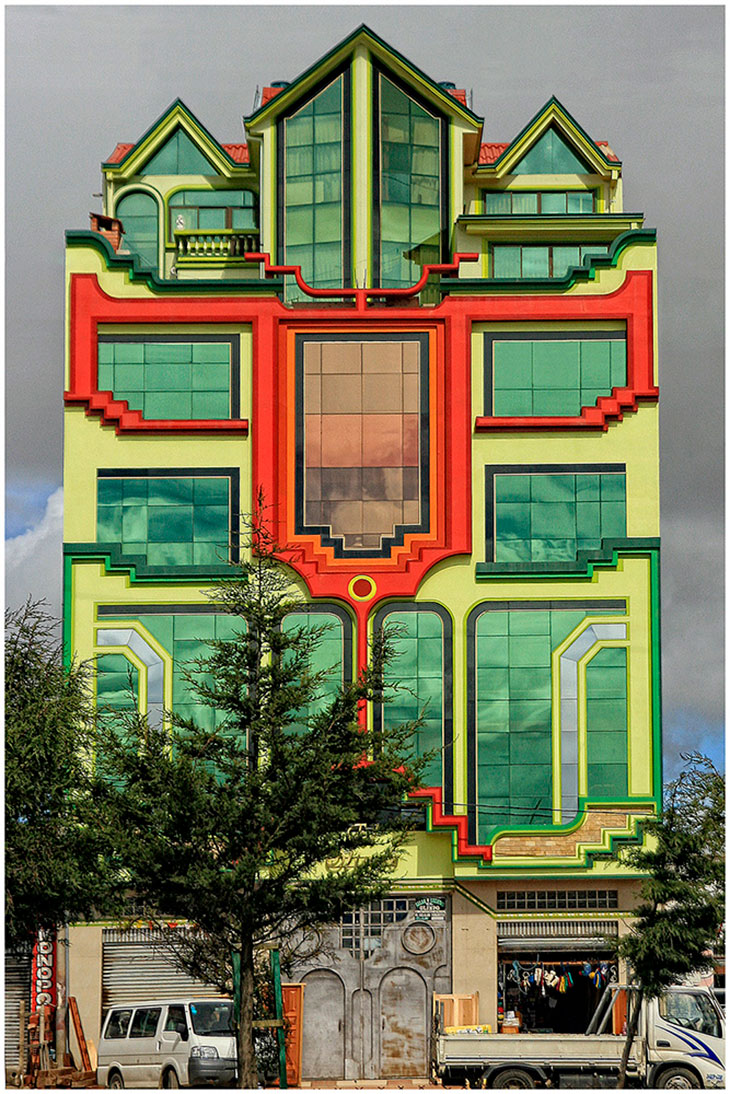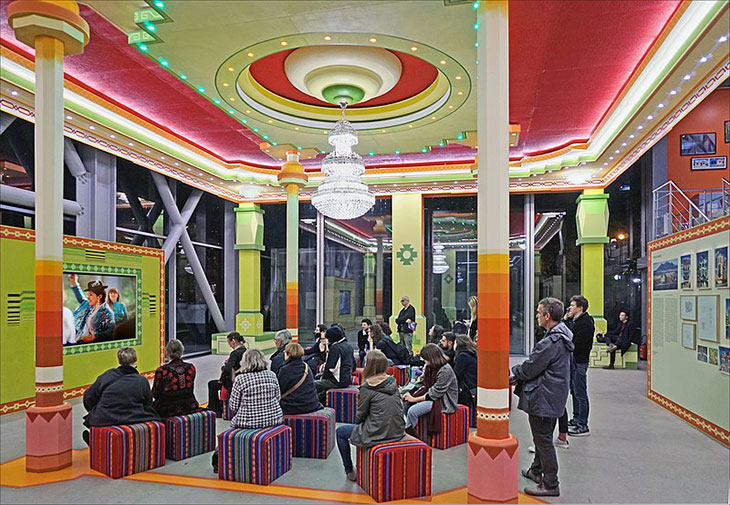
In the bustling streets of El Alto, Bolivia, amid the backdrop of the majestic Andes Mountains, a colorful architectural revolution is taking place. At the forefront of this movement stands Freddy Mamani, a visionary architect whose innovative designs are reshaping the urban landscape and revitalizing indigenous culture. Through his bold use of color, geometric shapes, and intricate motifs, Mamani has pioneered what is now known as the Neo-Andean style, a vibrant fusion of traditional Andean aesthetics with contemporary architecture.
Born in 1971 in the highland town of Tiwanaku, Mamani grew up surrounded by the rich cultural heritage of the Andean region. From a young age, he was drawn to the intricate patterns and vibrant colors of traditional Andean textiles and architecture. Inspired by this cultural legacy, Mamani started blending his indigenous roots with modern architectural principles, ultimately giving birth to the Neo-Andean style.
View this post on Instagram
Mamani’s architectural career began modestly, working as a bricklayer’s assistant before enrolling in night classes to study architecture. Armed with a deep appreciation for his indigenous heritage and a desire to challenge conventional design norms, Mamani set out to create buildings that would not only serve their functional purpose but also celebrate Andean identity and culture.
One of Mamani’s most iconic creations is the Cholet, a unique architectural hybrid that combines elements of traditional Andean architecture with modern amenities. These multi-story buildings feature striking facades adorned with intricate geometric patterns, vivid colors, and ornate decorations inspired by indigenous motifs. Each Cholet is a vibrant testament to Mamani’s vision of blending the past with the present, paying homage to Andean tradition while embracing contemporary design principles.

The interior spaces of Mamani’s Cholets are equally impressive, featuring spacious apartments adorned with colorful murals, mosaic tiles, and handcrafted furniture. These living spaces reflect Mamani’s commitment to creating environments that are not only aesthetically pleasing but also culturally enriching, providing residents with a sense of pride in their heritage.
One of the most remarkable aspects of Mamani’s work is its accessibility to people from all walks of life. Despite the luxurious appearance of his buildings, Mamani strives to make his designs affordable to working-class families, believing that everyone deserves to live in a home that reflects their cultural identity. This commitment to inclusivity has earned Mamani widespread admiration and respect, turning him into a beloved figure in Bolivia and beyond.
Mamani’s influence extends far beyond the borders of Bolivia, with his work garnering international acclaim and attention. His innovative approach to architecture has inspired architects and designers around the world, sparking a renewed interest in indigenous aesthetics and traditional building techniques. In recent years, Mamani’s Neo-Andean style has been embraced by a new generation of architects seeking to create buildings that are not only visually stunning but also culturally relevant and socially responsible.

Despite his rising fame and success, Mamani remains deeply rooted in his indigenous heritage, using his platform to advocate for the preservation and celebration of Andean culture. Through his architectural creations, Mamani has become a cultural ambassador for Bolivia, shining a spotlight on the country’s rich artistic traditions and vibrant indigenous communities.
As Freddy Mamani continues to push the boundaries of architectural innovation, his legacy as a visionary architect and cultural icon is sure to endure for generations to come. In a world increasingly dominated by homogenized urban landscapes, Mamani’s Neo-Andean style serves as a powerful reminder of the beauty and diversity of indigenous cultures, inspiring us to embrace our heritage and celebrate the rich tapestry of human creativity.



